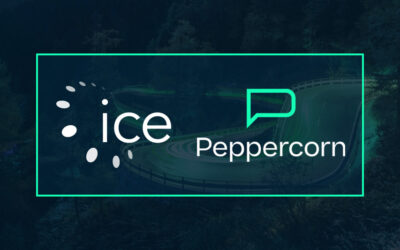We always ask the prospect for feedback – what could we have done better to win the business? It is strange that not once in 30 plus years has a prospect ever asked for feedback on their RFI (Request for information) or RFP (Request for proposal).
Maybe it’s because they believe that they will not have to write another one for a significant period, or they believe they have the perfect document? Getting feedback from suppliers could really benefit them in the selection process, especially when looking at something as game changing as a new insurance claims and policy administration system.
This article will cover the key guidelines of getting an RFI “right” – I don’t necessarily mean perfect but I do mean gathering all the key data you need to start the supplier selection process with an accurate benchmark. An RFI is not a full-blown proposal, it should be seen as the first step to creating a shortlist of suppliers. Make the RFI too short and it loses meaning, too long and detailed and it defeats the objective. Here are my 6 top tips for writing a good RFI which should help you accurately select your next insurance software solution vendor:
1. Do your homework
Even for a relatively straightforward RFI you will need to do some homework. Whether you are using a specialist consultancy such as Celent to produce your document, or producing it in-house, it is essential that you research your target suppliers. This does not just mean looking at their websites for a reasonable “fit”, it means looking at their customers, are they similar to your business, are they easy to do business with? The insurance industry inhabits a small world, it is likely that someone in your organisation will have a contact at one or more of the suppliers’ customers – reach out, ask them how the supplier performs, how do they deliver, would they make the same choice again? This relatively simple process can be very effective in saving you £££’s in the long run.
2. Be Realistic
Target your suppliers. I was once in a process which involved in excess of 20 suppliers within the insurance supply chain, some of which couldn’t even support the product lines required. Be reasonable, for a first stage RFI I would expect to see no more than half a dozen companies. This reduces your internal evaluation time and provides focus. Remember, everyone is human and people do talk sometimes even if NDA’s have been signed. If it’s known that the same document has been submitted to a dozen or more suppliers, you are unlikely to receive the same attention and level of detail in the response.
Also consider timelines for response – I can remember many occasions where a 200 question RFI covering multiple topics is sent out on the Thursday before a bank holiday weekend with answers expected on the following Tuesday. One infamous software RFI was even sent out 2 days before Christmas with a week to complete. Many suppliers will use subject matter experts for various RFI sections and to ensure you obtain the most concise and accurate response, you should seriously consider the time required to pull the resources together.
3. Communication
Ideally communicate with your supplier before the RFI is issued, give guidelines and background information and be prepared to answer questions. After all, the more a supplier knows, the more tailored the answers can be.
Once the RFI is issued, give the opportunity for discussion – what do you mean by this question, how would you prefer this to be answered, what is your preferred licencing model, do you have any deadlines for go-live e.g. existing licensing issues? All these things will enable your suppliers to provide the best possible response.
If you can, please avoid compiling all supplier’s questions into a single list and distributing. A pro-active and knowledgeable supplier may ask you questions that no other supplier had thought about. Do you really want to share that information which may help companies where the question hadn’t even crossed their mind? You are conducting a selection process – not trying to give everyone an equal footing.
4. Be clear about what you want
It is surprising to see many documents asking if software is deployed on a SaaS model, then go on to ask if the software is “self-configurable”. Let’s be clear here, SaaS is software delivered as a service, usually from a cloud environment which may have periodic upgrades delivered to it. Hosted software in a cloud environment is usually a single or multiple instance, ring-fenced for your organisation which is upgraded or configured at the customers instruction, which the customer can configure, or as is the case with some legacy insurance software, use a developer to change and amend.
The same applies to your questions. If you ask closed functionality, technical, hosting, delivery questions you will get closed answers. For example, “Does your software have the ability to support xxxxxx?” Well some software companies will answer “yes” because the software could support it given enough time and money! Far better to ask “HOW” the software supports something and ask for comments on the question with examples.
5. References
Another common “error” we have encountered in the insurance industry is the habit of asking for 3 or more reference sites. Many software vendors will cherry pick the best and you have no guarantee of fairness of representation. Far better, after having done your homework above, for you to pick 3 reference customers from their website that more closely resemble your needs and specify these as the companies you will want to talk to. If the supplier really does deliver in all areas this will NOT be a problem.
6. Evaluation
Not all suppliers answer in the same way. Some will answer a simple “yes” to everything in the hope and expectation of getting to the next stage. Others will be more open with their answers. Take the time to review the answers with each supplier – some may be underselling system capability and functionality to ensure expectation is set correctly and there are no nasty surprises during implementation.
Summary
After RFI and RFP stages, demonstrations, proof of concepts, and commercial discussions, you will rightly pick the supplier you deem best fits your requirements. Typically this will be based on functionality, overall cost of ownership, likely ROI and partnership approach (after all this should be a long term partnership) but it is important that you always pick a company where you have met the people you will be working with. The human element in all implementations should never be overlooked, and this is particularly true of the insurance industry where claims and policy processes are complex affairs that normally involve multiple handlers.
For more information, contact ICE InsureTech
More articles
Peppercorn insurance wins first Celent Model Insurer Award with ICE
Peppercorn insurance is ICE’s first client to win the Celent Model Insurer Award for Digital and Emerging Technology. Their well-deserved success has set a new industry standard on how AI can support digital transformation in insurance.
PeppercornAI & ICE InsureTech Announce Partnership
Insurtech PeppercornAI announced their first strategic partnership with ICE InsureTech that will support rapid digital transformation in the insurance industry.
Kindertons launches its big ICE roll-out at the same time as going live on Acturis
Kindertons transforms operations with new launches powered by Acturis & ICE InsureTech, both integral companies in the Acturis Group.




